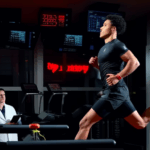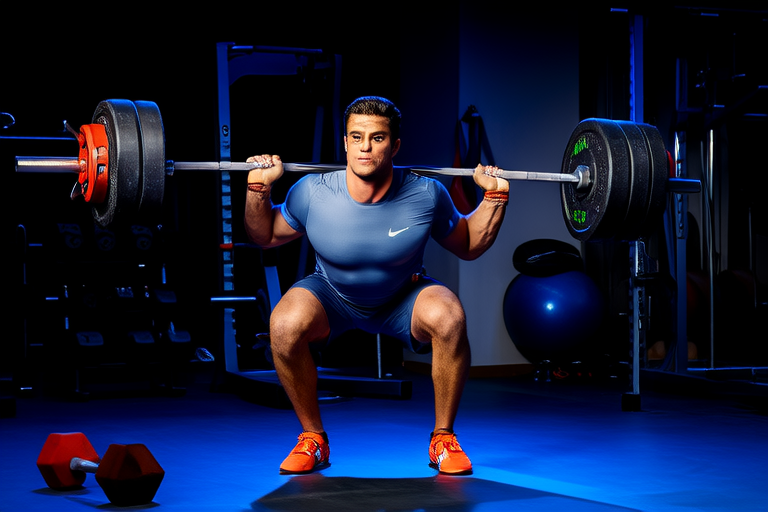Optimizing Performance: Key Insights from Sports Science and Essential Precautions
Introduction
The pursuit of peak performance is a cornerstone in both professional sports and personal fitness endeavors. Whether you’re an elite athlete striving for a world record or a weekend warrior aiming to improve your health, understanding how to optimize performance can significantly enhance outcomes. In today’s competitive environment, leveraging advancements in sports science provides a clear path toward achieving goals while minimizing risks. This article explores key insights from sports science, focusing on evidence-based strategies that can be applied by anyone seeking to elevate their physical capabilities. Additionally, we will discuss essential precautions every athlete should take to ensure safety and longevity in their chosen activity.
Key Insights from Sports Science
Training Techniques
Effective training programs are at the heart of improving athletic performance. High-intensity interval training (HIIT) has emerged as a powerful tool due to its ability to boost cardiovascular endurance, increase muscle strength, and promote fat loss within shorter timeframes compared to traditional continuous exercise. Interval training involves alternating short bursts of intense activity with periods of rest or low-intensity exercise, allowing muscles to recover before the next high-intensity bout.
Resistance training plays a crucial role in building lean muscle mass, enhancing bone density, and increasing metabolic rate. Incorporating compound movements such as squats, deadlifts, bench presses, and pull-ups maximizes efficiency by engaging multiple muscle groups simultaneously. Progressive overload—gradually increasing the resistance, volume, or intensity over time—is fundamental to continued progress.
Nutrition
A balanced diet rich in macronutrients (carbohydrates, proteins, fats) and micronutrients (vitamins, minerals) fuels optimal performance. Carbohydrates serve as the primary energy source during prolonged or high-intensity activities, making it essential to consume adequate amounts before workouts. Protein aids in muscle repair and growth; consuming enough post-exercise supports recovery. Healthy fats contribute to hormone production and energy storage. Hydration remains critical throughout, especially when engaging in physically demanding exercises.
Dietary supplements may complement a well-rounded diet but should never replace whole foods. Omega-3 fatty acids support heart health and reduce inflammation, while creatine monohydrate enhances power output and improves muscular strength. Antioxidants like vitamin C and E combat oxidative stress caused by intense exercise.
Recovery Methods
Active recovery involves light aerobic exercises performed immediately after strenuous sessions to promote blood flow, aid in waste removal, and accelerate healing processes. Foam rolling, stretching, and yoga help maintain flexibility and prevent injuries by addressing tightness and imbalances. Sleep is paramount for overall wellness and recovery; aim for 7-9 hours per night to allow the body sufficient time to repair tissues and consolidate memory.
Cryotherapy and compression therapy offer alternative approaches to speeding up recovery times. Cold exposure reduces inflammation and swelling, whereas wearing compression garments increases venous return, thereby enhancing circulation.
Mental Preparation
Mental fortitude often separates champions from contenders. Visualization techniques involve imagining successful execution of skills under pressure, fostering confidence and reducing anxiety. Mindfulness practices encourage present-moment awareness, helping athletes stay focused during competition. Goal setting provides direction and motivation, breaking down larger objectives into manageable steps. Positive self-talk reinforces belief in one’s abilities, promoting resilience against setbacks.
Essential Precautions
Injury Prevention
Proper technique during all activities is paramount in preventing injuries. Poor form places undue stress on joints and muscles, leading to strains, sprains, and overuse conditions. Strengthening weak areas through targeted exercises ensures balanced development across different parts of the body. Adequate rest between sessions allows tissues ample opportunity to recuperate fully.
Wearing appropriate gear tailored to specific sports offers additional protection. Helmets safeguard against head trauma in contact sports, while supportive footwear prevents ankle sprains and plantar fasciitis. Protective padding shields vulnerable areas susceptible to impact.
Warm-Up and Cool-Down Routines
Dynamic stretches engage muscles dynamically, preparing them for upcoming demands. Examples include leg swings, arm circles, and torso twists. These movements increase core temperature, lubricate joints, and activate neural pathways responsible for coordination.
Static stretching post-exercise elongates muscles and tendons, restoring range of motion lost during intense contractions. Holding each stretch for 15-30 seconds without bouncing promotes relaxation and decreases tension.
Listening to Your Body
Paying attention to subtle cues helps identify early signs of fatigue or distress. Discomfort that persists beyond normal soreness warrants investigation. Adjusting training loads based on feedback ensures ongoing progression without compromising health.
Seeking professional guidance from certified coaches, trainers, or medical professionals equips individuals with expert knowledge and personalized advice. Regular check-ups monitor vital signs and detect potential issues before they escalate.
Conclusion
Optimizing performance requires a multifaceted approach encompassing training, nutrition, recovery, and mental preparation. By incorporating evidence-based strategies derived from sports science, athletes and enthusiasts alike can maximize their potential while minimizing risks. Remember to prioritize injury prevention, adhere to structured warm-up and cool-down protocols, and always listen closely to your body’s signals. With dedication and consistency, these principles will guide you towards sustained improvement and long-term success.
To begin applying these insights effectively, start small by integrating one new habit each week. Gradually build upon this foundation, ensuring every aspect aligns with your unique needs and goals. Stay informed about emerging trends in sports science, continually refining your approach as necessary. Ultimately, the journey toward optimized performance is both rewarding and fulfilling, offering countless opportunities for growth and achievement.










